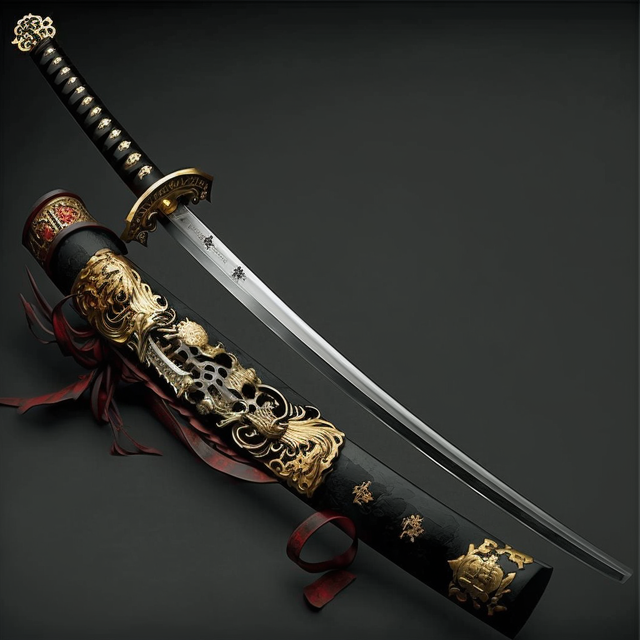The Evolution of the Katana: From an Ancient Weapon to a Modern Symbol

For many years, the katana has been associated with samurai warriors. It is regarded as one of the most famous and lethal weapons in the world and is a symbol of honor, strength, and power. In this blog post, however, we examine the katana's evolution from an antiquated weapon to a contemporary symbol.
The Katana's historical context.
The katana was created for the first time in Japan's Muromachi era in the 14th century. The tachi swords, which were longer and heavier than the katana, were used by the samurai prior to the invention of the katana. The samurai needed a new weapon that was light, quick, and deadly because the tachi proved ineffective in close combat.
The katana was created as a one-handed sword with a long, curved blade that was perfect for slicing and cutting. Additionally, it was created so that the samurai could quickly and effectively draw their sword by wearing it with the cutting edge facing up. Tamahagane, a unique kind of steel created by fusing iron sand and charcoal in a clay furnace, was used to create the katana. A strong, flexible blade was created by folding and repeatedly hammering the steel.
During the Sengoku period, which saw constant warfare and political unrest in Japan, the katana was frequently used. The katana was the samurai's go-to weapon for self and lord protection, and it came to represent their courage, honor, and loyalty.
The Rise of the Katana as a Symbol and the Fall of the Samurai.
Samurai gradually lost their position in society and politics with the end of the Sengoku period and the shogunate of Tokugawa in the 17th century. Although it was no longer a weapon of war, the katana was still a significant representation of the samurai's code of loyalty and honor.
Late in the 19th century, during the Meiji Restoration, Japan underwent a rapid modernization and Westernization period. The katana was outlawed as a representation of the previous administration, and the samurai class was abolished. The katana was nevertheless kept as a work of art and a representation of traditional Japanese craftsmanship because it continued to hold a special place in Japanese culture.
The Modern Era and the Katana's International Popularity.
The katana became well-known outside of Japan in the 20th century as a representation of Japanese culture and martial arts. Hollywood productions like "Seven Samurai" and "Kill Bill," which starred samurai warriors and their recognizable swords, contributed to the katana's widespread use and rise to fame.
One of the most recognizable weapons in the world today, the katana is still revered as a representation of Japan's rich cultural heritage. It is valued for its historical significance as well as for its beauty, craftsmanship, and symbolism and is still made by master swordsmiths using age-old methods and materials.
Conclusion.
The katana has come a long way from its humble beginnings as a combat tool to its present position as an international representation of Japanese culture and martial arts. The katana has earned acclaim throughout history for its lethal combat efficiency, iconic design, and symbolic significance to the samurai code of honor and loyalty. One of the most enduring images of Japan's rich cultural heritage, the katana continues to fascinate and inspire people all over the world today.